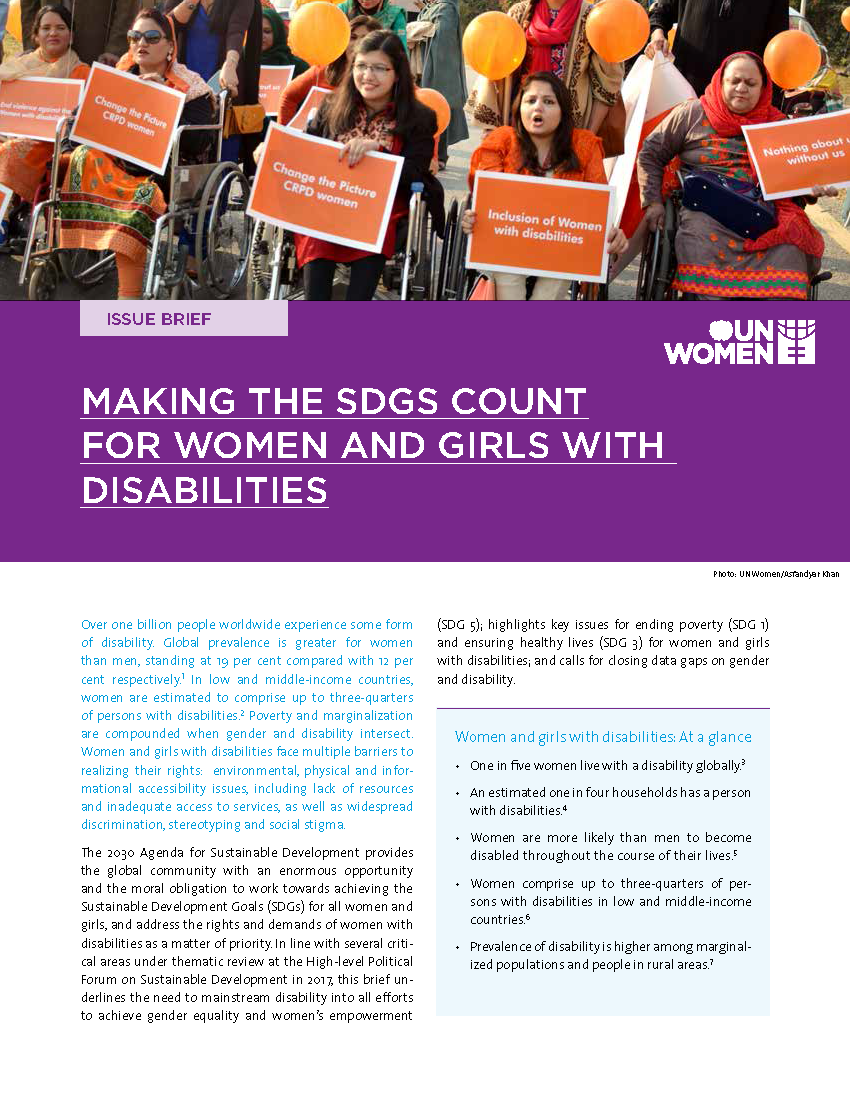
Over one billion people worldwide experience some form of disability. Global prevalence is greater for women than men, standing at 19 per cent compared with 12 per cent respectively. In low and middle-income countries, women are estimated to comprise up to three-quarters of persons with disabilities. Poverty and marginalization are compounded when gender and disability intersect. Women and girls with disabilities face multiple barriers to realizing their rights: environmental, physical and informational accessibility issues, including lack of resources and inadequate access to services, as well as widespread discrimination, stereotyping and social stigma.
The 2030 Agenda for Sustainable Development provides the global community with an enormous opportunity and the moral obligation to work towards achieving the Sustainable Development Goals (SDGs) for all women and girls, and address the rights and demands of women with disabilities as a matter of priority.
In line with several critical areas under thematic review at the High-level Political Forum on Sustainable Development in 2017, this brief underlines the need to mainstream disability into all efforts to achieve gender equality and women’s empowerment (SDG 5); highlights key issues for ending poverty (SDG 1) and ensuring healthy lives (SDG 3) for women and girls with disabilities; and calls for closing data gaps on gender and disability.
Order printed/published version
Languages available: English
Bibliographic information
Publication year: 2017
Number of pages: 4
